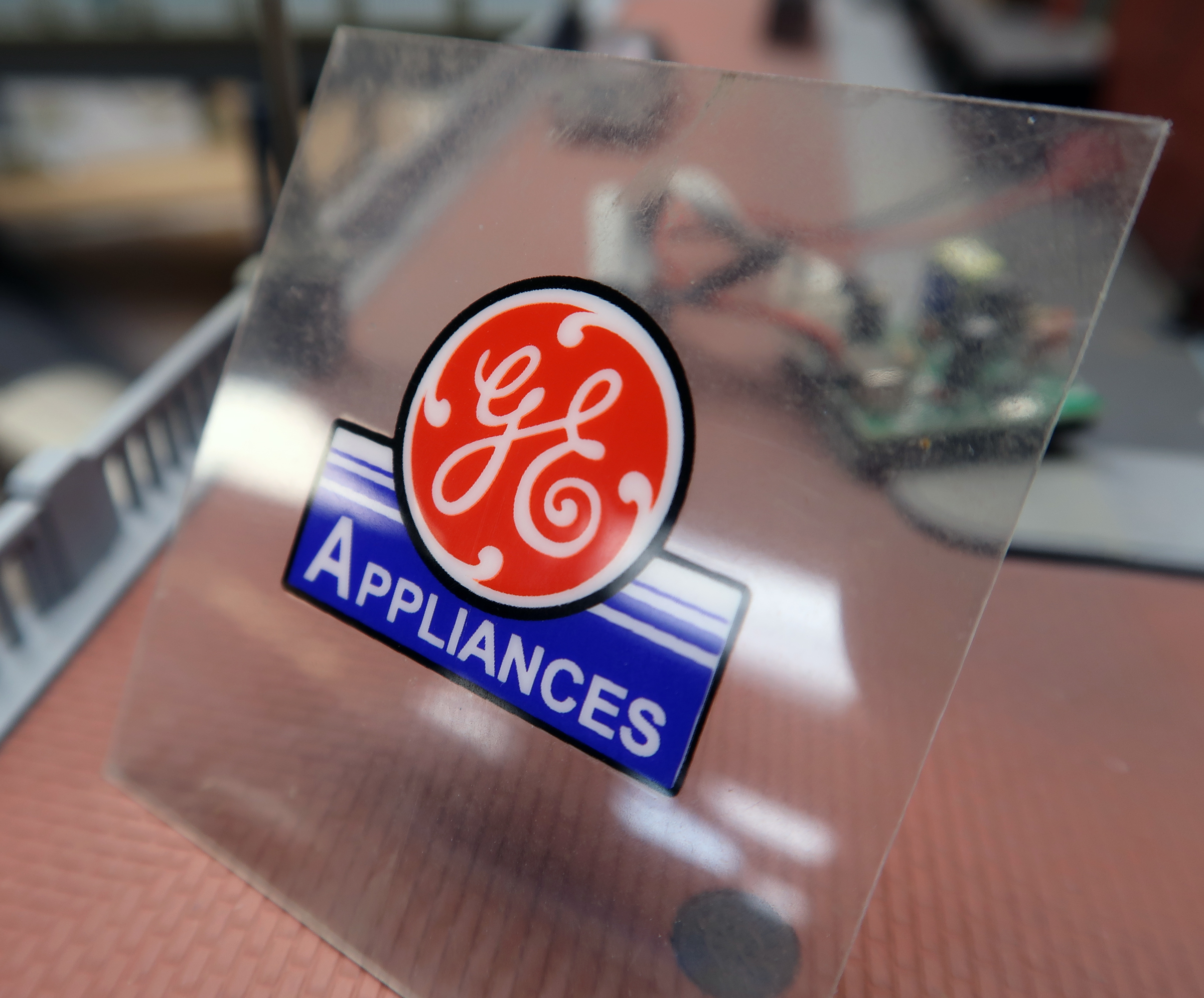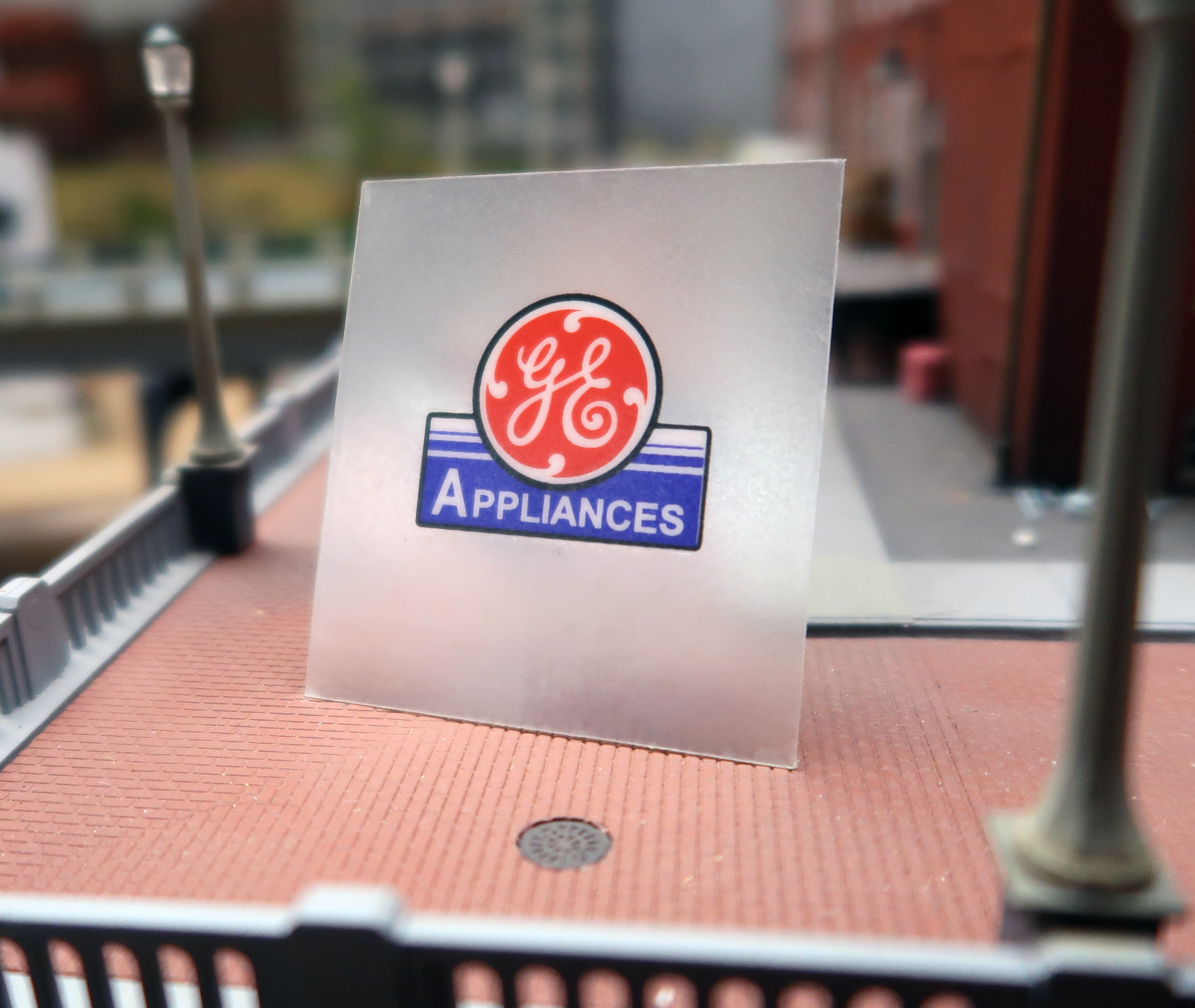I think Randy’s concern is if the chemical properties of the paint will effect the EL material.
Mel

My Model Railroad
http://melvineperry.blogspot.com/
Bakersfield, California
I’m beginning to realize that aging is not for wimps.
I think Randy’s concern is if the chemical properties of the paint will effect the EL material.
Mel

My Model Railroad
http://melvineperry.blogspot.com/
Bakersfield, California
I’m beginning to realize that aging is not for wimps.
Are all these signs actually faced with active material?
My guess for whether spraying a coating would ruin one of these signs would be no, in nearly any case.
If you have a flat-faced panel with EL segments embedded, the face material is what would be coated.
If you have ‘beads’ of EL material exposed, it is unlikely that short-term exposure to at least water-based vehicle would cause ‘loss of glow’ combined with opacity. The coating certainly won’t permeate very far…
In fact, I’d suspect the actual EL material in these signs may already have been coated (for environmental tolerance, resistance to scratching, etc.) and so applying a dulling coat would be no different than on other shiny clear coatings…
All we need is a small amount of silica fume or similar transparent ‘microsphere’ sort of material, in a suitable clear material. If Dullcote itself is too thick or ‘white’ when dried, I’d bet it wouldn’t take long to figure out a formula that would be right.
I have a 12 VDC post supply driving my structure illumination bus on my layout. I measure the current when I get a Miller sign and drive the sign’s electronics board from the bus using a dropping resistor to avoid batteries and having more on-off switches to throw.
Animated signs modern? Check this thing out, from 1910! It’s just a shame there is no motion picture film of it working. Explained why in the video. Still a shame. All run by basically a giant drum of switches.
https://www.youtube.com/watch?v=u0KZXsZWP0E
Like I said, I don’t have any of the Miller signs yet, but if they are faced with a sheet of acetate, then it should already be not too shiny, and Dulcote shouldn’t hurt it if it needs to be dulled down even more. Yes, my concern was the solvent in the paint possibly dissolving the EL material if it was directly exposed - like how many plastics are damaged by solvent paints if not first primed.
I used to have those EL night lights all over. A lot more recently than 30 years ago. Now they just make them with LEDs. Timex Indiglo clocks also use EL - I stil have and use my battery powered one, and it too has a cheap coil in it, when I hit the button to light up the screen, the whine is clearly audible even as old as I am, a high pitched whine, that trails off since the lighting circuit seems to basically charge up a capacitor which poweres the backlight for a few seconds after you let go of the button. I’d build a nixie tube clock for bedside, but I don;t want to try smashing the snooze button on something like that, or fry the cat if she walks across it. I’ve probably had this thing for 30 years, one AA lasts a couple of years. Only problem is it runs fast - but that’s better than it running slow. So I get up a little earlier than expected…
–Randy
I hope that Miller Engineering includes a warning in the package.
90 volts???
Yikes.
Rich
I was thinking along those same lines, but there are so many irregularly shaped signs that it might be a lot of work to do, and I wonder if the adhesive would damage the surface of the sign.
Rich
I was thinking further about the type that have the EL as a ‘bead’ on the surface, like Ed’s station sign. Seems to me there were matte-finish sheets that you could install by heating them with an iron or heat gun, and the latter might be a thing that would be useful here: drape the sheet on the sign, heat it until it conforms to the surface, cut the ‘voids’ out with a sharp #1 or equivalent, and give it a quick pass to fix any edges down.
Another possibility is intentional damage to the glossy surface – very slight damage producing the frosted surface, that is. I don’t know if ‘sanding liquid’ is still legally sold or reasonably available, but a product that would just ‘craze’ the surface of shiny plastic and then evaporate when you wiped it on in a thin layer would neatly fill the bill; it might even serve for signs that are already installed on structures, better than trying to use a paint or brushed/sprayed coating on them there…
Here’s the results of my in-depth investigation:
Miller sign before:
 Miller_GE_gloss by Edmund, on Flickr
Miller_GE_gloss by Edmund, on Flickr
Miller sign after:
 Miller_GE_matte by Edmund, on Flickr
Miller_GE_matte by Edmund, on Flickr
Methodology:
The front of the sign seems to be plain acetate with the electronics applied from the back and laminated with a simple adhesive layer of what seems to be plain packing tape or similar clear substrate.
I washed off both faces of the sign, being careful to keep the solder pads and wire connection dry, using plain isopropyl alcohol.
The first application of Testors DullCote went on very smoothly but I decided that the gloss had not been reduced as much as I’d expected. Twenty minutes later I gave a second coat of DullCote and I immediately noticed orange-peel on the surface. I’ve had this happen before with DullCote for some reason.
After roughly a half-hour I decided to try a layer of Rustoleum “Dead Flat” spray over top of the DullCote. This dried to a nice, even finish and this is what you see in the photo.
Now, keep in mind some of the Miller signs are designed so the clear area is supposed to be “invisible” so any application of a matte finish is going to negate this effect.
If I were to DullCote my Union Station sign the see-through effect would be destroyed:
 IMG_6325_fix by Edmund, on Flickr
IMG_6325_fix by Edmund, on Flickr
[quote user="O
Very, very interesting, Ed. Now, let’s see what the OP has to say about that technique. It sure seems promising.
Rich
Ed
Does the sign still work after the paint?
Mel

My Model Railroad
http://melvineperry.blogspot.com/
Bakersfield, California
I’m beginning to realize that aging is not for wimps.
It didn’t work before the paint! [:^)]
That’s why I was willing to sacrifice it. Still, I see no reason why it wouldn’t. There’s no way for the finish to soak through the face of the sign.
I should see if Miller would be willing to repair it. There’s a capacitor on the board that gets hot when I power it up. However — This particular sign is probably fifteen years old and a new sign is $15 plus shipping.
Regards, Ed
LOL.
Well that answers that question. I was wondering why you would be so willing to sacrifice a perfectly good sign. Apparently, you wouldn’t.
Rich
Ed
I’ll take a look at one of my Miller power supplies with a scope and see what the 90 volts looks like, maybe you could attempt to light up your sign.
Mel

My Model Railroad
http://melvineperry.blogspot.com/
Bakersfield, California
I’m beginning to realize that aging is not for wimps.
Old neon signs are certainly nostalgic:
I don’t recall seeing the puffing Camel sign when I was at Times Square but the Chock-Full-O-Nuts sign had a steaming coffee cup. Perfect for those white smoke units pulled out of Broadway locomotives.
When I was a kid I admired the animated sign at the Tip-Top bakery. It had a loaf of bread and a motorized “wheel” that slices of bread would flip out of the bag and on to a plate.
Also there was a huge, neon sign for Burdett Oxygen showing a welder with a cutting torch and the neon “sparks” would fly all over. A real, colorful gem on the east-side of Cleveland. I never found any photos of it [:S]
Come to think of it, I DO have another working Miller sign I can shoot with DullCote. It’s an I.C. Sparks Welding Supply sign I just remembered. I’ll give it a try later.
Regards, Ed
Surprising! The little bugger is 90 volts at 50kh with a pretty good looking square wave for a cheapie device.
Two caps on board, the large one is 220μf at 16 VDC, the smaller one is 10μf at 25 VDC
It draws 82ma at 4.5 VDC.
The caps really stop any ripple on the 4.5 volt input, zip at the lowest my scope will go with 0 attenuation on the probe.
EDIT:
I’m rather proud of myself, I diddled around with that little power supply for about 20 minutes and didn’t get zapped. Shaky Mel is doing better.
Mel

My Model Railroad
http://melvineperry.blogspot.com/
Bakersfield, California
I’m beginning to realize that aging is not for wimps.
But I did:
 Miller_Sparks_matte by Edmund, on Flickr
Miller_Sparks_matte by Edmund, on Flickr
This one works just fine after two coats of DullCote.
I’m going to conclude that spraying the face of a Miller sign with matte finish does no harm.
[2c] 2¢
Cheers, Ed
Happy to hear that you are doing better Mel!
And I am very glad that you did not get zapped.
-Kevin
+1
Wow! I hadn’t expected so many comments guys. Thanks for your inputs. I should have chosen my words more carefully… when I said “shiny” I should instead have said “Glossy”. Specifically, the “Union Station… Travel by Train” billboard. The front surface of mine is glossy and detracts from the “realism” we all aspire to. But I had NOT considered the “invisibility” factor of the see-through portions of the sign around the billboard framework. Thanks to gmpullman for making me mindful of that, and for the trial tests.